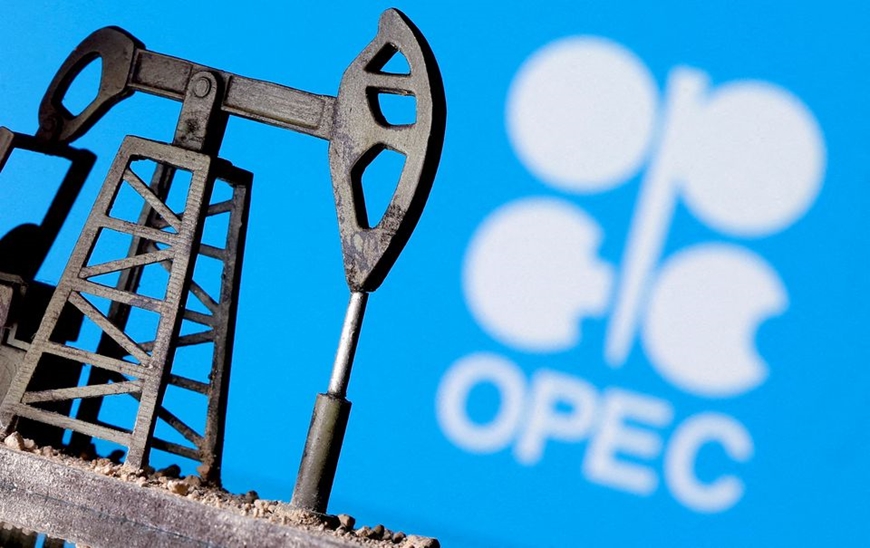The fate of the US debt ceiling deal is under threat, sending oil prices plunging. Brent crude fell nearly 5%. WTI rose after falling more than 4%.
World oil prices
According to Reuters , oil prices fell more than 4% at the end of the trading session on May 30. This unexpected drop in oil prices was due to increasing concerns about whether the US Congress would pass the US debt ceiling agreement and due to mixed messages from major oil producers in the world about the supply outlook ahead of the OPEC+ meeting this weekend.
 |
| Oil prices have plunged after the market worried about the fate of the US debt ceiling agreement. Illustration photo: Reuters |
Brent crude for July delivery fell $3.53, or 4.6%, to $73.54 a barrel. U.S. West Texas Intermediate (WTI) crude fell $3.21, or 4.4%, to $69.46 a barrel.
Some hard-line Republican lawmakers have said they may oppose a deal to raise the debt ceiling in the United States, the world's largest oil consumer, Reuters reported. US President Joe Biden and House Speaker Kevin McCarthy remain optimistic that the deal will pass.
President Biden and House Speaker McCarthy reached a deal late on May 27 to raise the debt ceiling. The deal needs to be approved by both chambers before June 5, the day the Treasury Department is expected to run out of money to pay all its obligations. If approved by Congress, the deal would avert a default that would destabilize the U.S. and global economies.
On May 30, House Speaker McCarthy called on Republican members to support the deal.
Until there are enough votes, the market will remain “volatile,” said Phil Flynn, an analyst at Price Futures Group.
The deadline for raising the US debt ceiling coincides with the June 4 OPEC+ meeting, with traders still uncertain about whether the group will continue to deepen production cuts as oil prices remain low, drifting further away from $80 a barrel.
Last week, Saudi Arabian Energy Minister Abdulaziz bin Salman warned short sellers betting on lower oil prices to “watch out” for losses, a warning that could signal that OPEC+ could cut production. But comments from Russian officials, including Deputy Prime Minister Alexander Novak, suggest the world’s third-largest oil producer is leaning toward keeping output steady.
 |
| Gasoline prices still fluctuate strongly in each trading session. Illustration photo: Reuters |
In April, Saudi Arabia and other OPEC+ members announced voluntary oil production cuts of about 1.2 million barrels per day, bringing the total OPEC+ cuts to 3.66 million barrels per day.
Data on China’s manufacturing and services sectors are due later this week, with markets watching for signs of a recovery in fuel demand in the world’s top oil importer.
Domestic gasoline prices
Domestic retail prices of gasoline on May 31 are as follows:
E5 RON 92 gasoline is not more than 20,488 VND/liter. RON 95 gasoline is not more than 21,499 VND/liter. Diesel oil not more than 17,954 VND/liter. Kerosene not more than 17,969 VND/liter. Fuel oil not exceeding 15,158 VND/kg. |
Last week, world oil prices marked the second consecutive week of increase. Notably, prices have continued to increase in recent days. Therefore, it is likely that domestic oil prices will be adjusted upward at the price adjustment session of the Ministry of Finance - Industry and Trade on June 1. It is expected that oil prices will fluctuate between 400 - 600 VND/liter (kg).
MAI HUONGSource



![[Photo] National conference to disseminate and implement Resolution No. 66-NQ/TW and Resolution No. 68-NQ/TW of the Politburo](https://vphoto.vietnam.vn/thumb/1200x675/vietnam/resource/IMAGE/2025/5/18/adf666b9303a4213998b395b05234b6a)
![[Photo] General Secretary To Lam visits exhibition of achievements in private economic development](https://vphoto.vietnam.vn/thumb/1200x675/vietnam/resource/IMAGE/2025/5/18/1809dc545f214a86911fe2d2d0fde2e8)




























































































Comment (0)